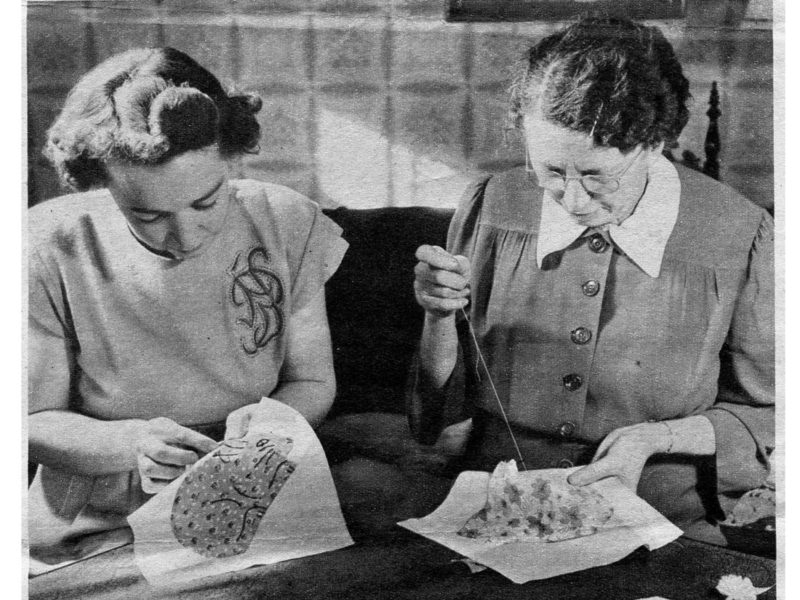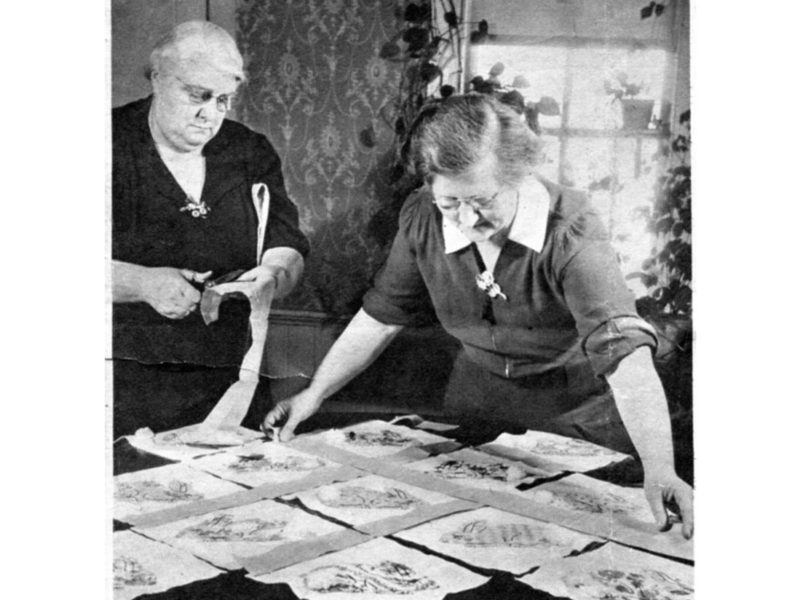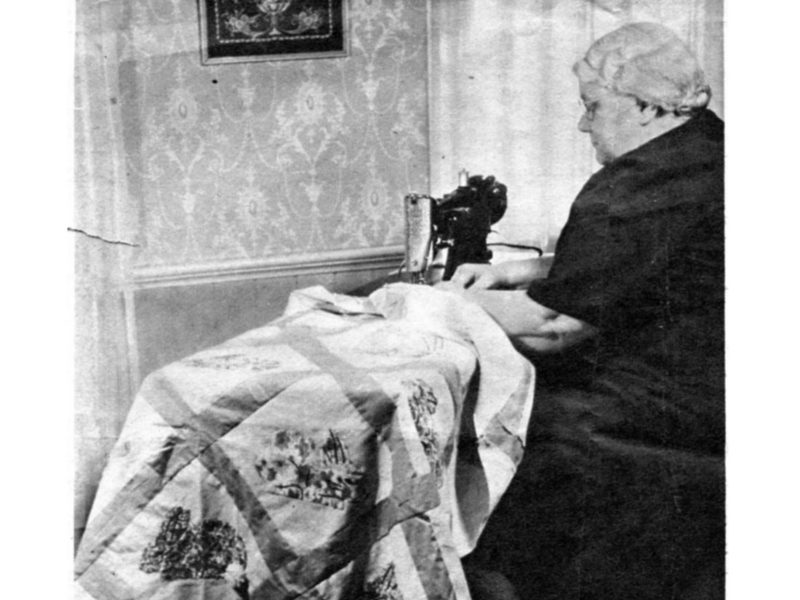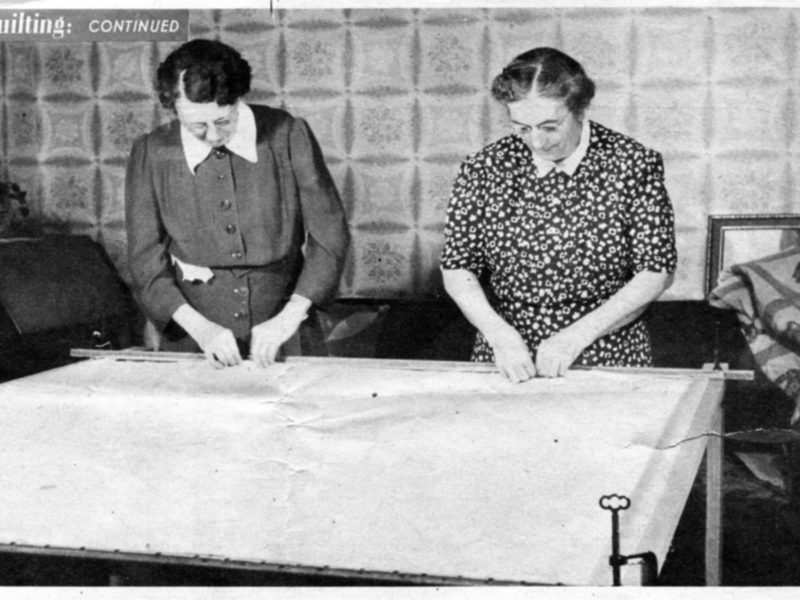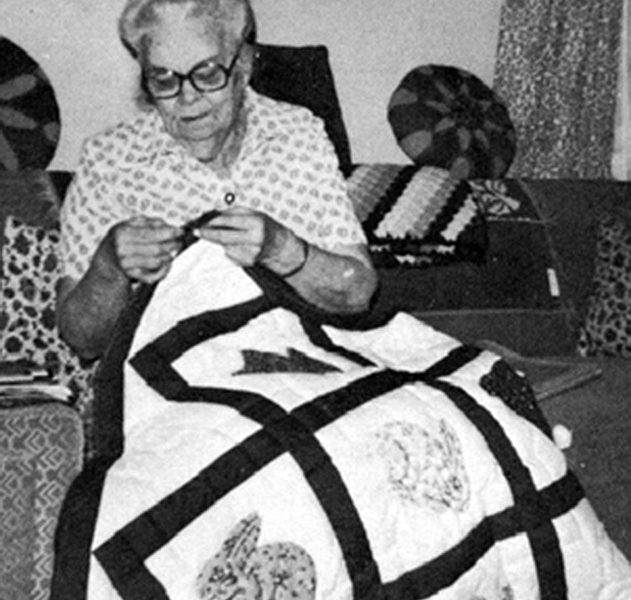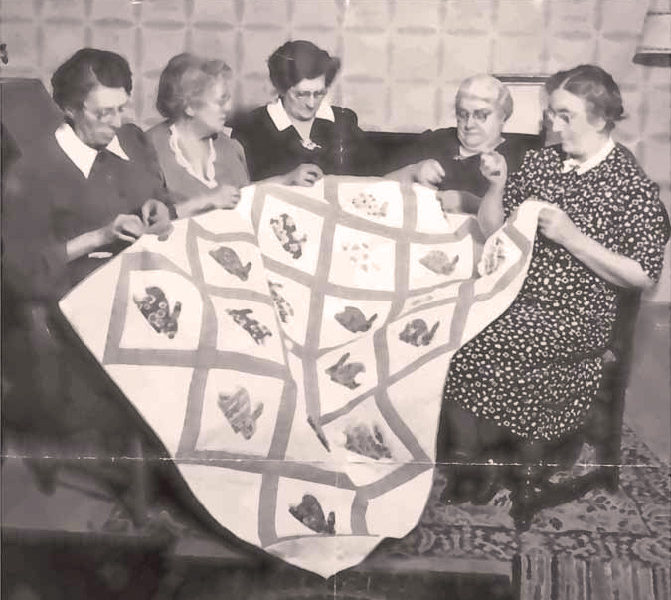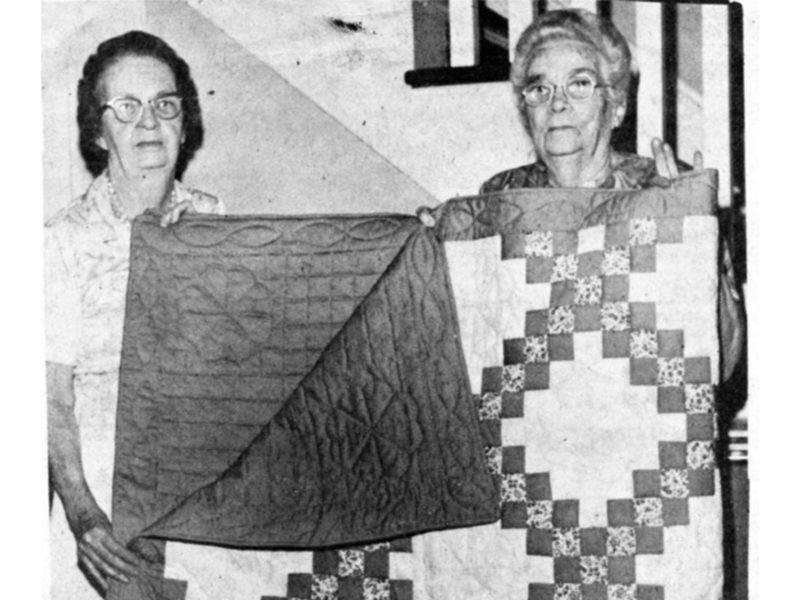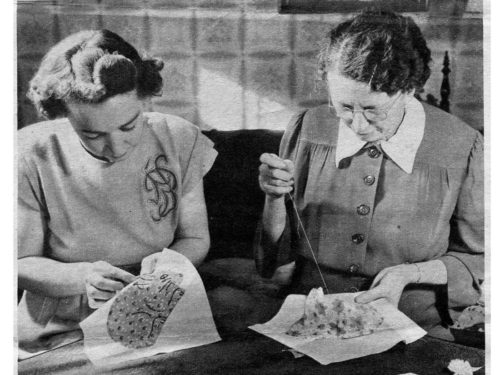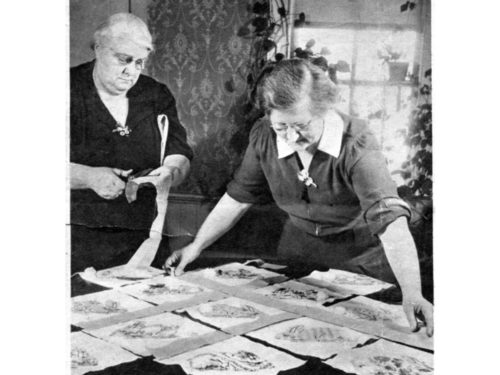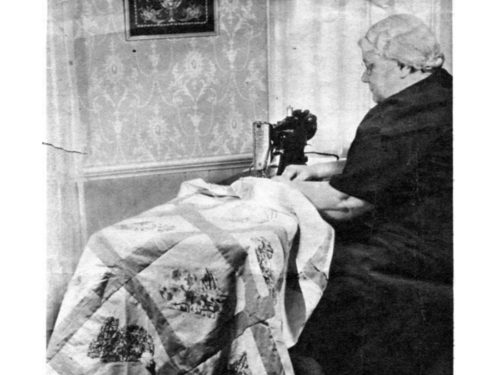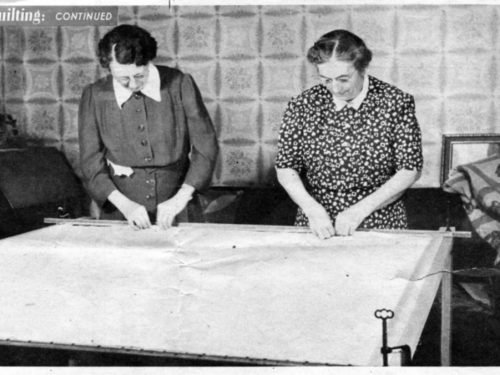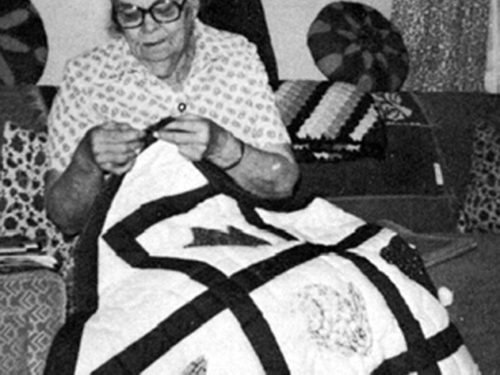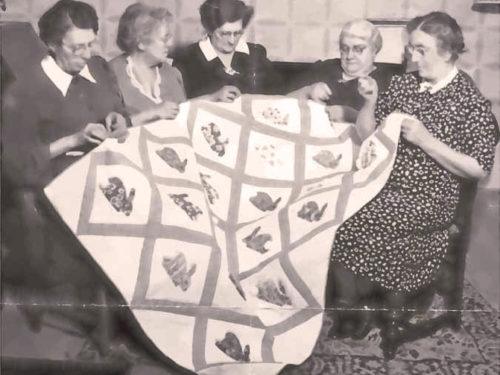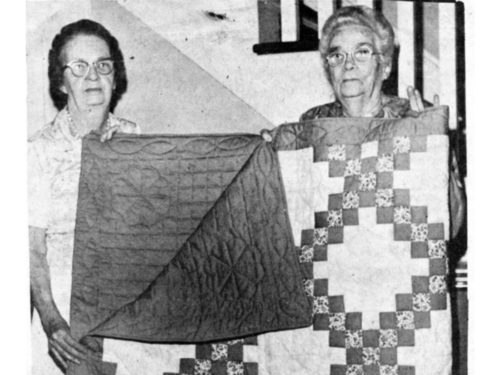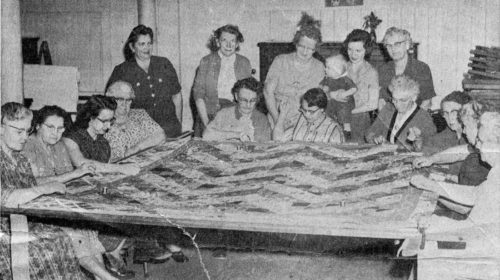Hemlock Grove Methodist Episcopal Church was built in 1874 on land donated by Jesse Burrus. Named for the magnificent grove of evergreen trees fronting the lot, it was the first church built in Greene Township. Prior to its construction, residents of the area were served by itinerant preachers who traveled a circuit to preach at gatherings in people’s homes. For a few years, worship services were held in the nearby Kipptown Schoolhouse. Bylaws of the new church stipulated that it could be used by any evangelical or orthodox preacher in good standing, with preference given to the Methodists. It was further stipulated that the horse sheds must be kept open at all times. The Hemlock Grove and South Sterling Methodist Churches were served for many years by the same minister.
From its earliest days, the women of the congregation formed a Ladies Aid Society. A social organization as well as a service group, it gave the women a place to meet new people and make friends while raising funds for the church. If a building improvement or repair was needed , the Aid contributed toward the project. They cooked and baked and hosted dinners of every kind: dime dinners, harvest dinners, chicken dinners, and the popular oyster suppers. Using their imagination, they sponsored a variety of community events, such as box parties, kuchen socials, porch socials and strawberry festivals. On one occasion they held a day-long festival that included homemade ice cream, a craft fair and games for young people—baseball, bag racing, and broad jumping—followed by a supper and a musical recital. While charging only 25 cents for adults and 10 cents for children, these events represented 50 percent of the total church revenue during some months.
At first, the women worked in a small outbuilding on church grounds, until a larger building was erected for them in 1901. Ten years later, the church building was raised and a semi-basement dug under it. This space included a kitchen and made it much easier to host dinners and other events. The next major upgrade was drilling a well. in 1914. The Aid had raised enough money for the project, and water for their church suppers would no longer need to be be supplied by a water wagon.
The women met weekly to quilt together in each other’s homes, and friends and neighbors were always welcome to join the group, regardless of their church affiliation. Their afternoon bees always included a meal, and each of the ladies would bring a covered dish or dessert. Their menfolk would sometimes join them at the noontime dinner table. The women did not quilt during the summer months when they were busy with gardening, canning, farm work and, in some cases, operating a summer boardinghouse. They did, however, gather with their families for a picnic in July at Promised Land State Park.
Thursday, February 28, 1946—Well, it turned out to be a lovely day, the sun shone all afternoon. The Aid met here today and there were 20 ladies, including Mom. We had a nice dinner – potatoes, spam, eggs, scrapple, cottage cheese, macaroni & cheese, tomatoes, corn, beans, sweet potatoes, sauerkraut, two kinds of salad, buns, doughnuts & huckleberry pie. I got very tired, and after they all left Mary’s three kids came over for supper but I just had leftovers.
—From the diary of Ethel Nelson Singer
Favorite quilt patterns were Sun and Shadow, Dresden Plate, Grandmother’s Flower Garden, Double Wedding Ring, Log Cabin, and, of course, the Star and some of its many variations. Their applique baby quilts, featuring calico bunnies with pom-pom cottontails, have become treasured family heirlooms and today are more likely to be found hanging on the wall of the nursery than in the baby’s crib.
The women featured their quilts and needlework at their annual Church Bazaar. Embroidered aprons and dresser scarves; cross stitch tablecloths; crocheted doilies; knitted afghans and baby sweaters; and braided wool rugs were all offered for sale at modest prices. Charging as little as six dollars for a quilt in the early years, their fundraising efforts oftentimes made the difference between the church’s treasury being in the red or the black at the end of the year. Their contributions, at times, helped pay the pastor’s salary, purchase stained glass windows, make up monthly deficits in the treasury, and purchase hymn books and supplies for the Sunday School. Their charitable work extended to the community as well, by raising funds to benefit families in need and by purchasing library books for the school.
In the mid-1940s, the Ladies Aid began a new fundraising initiative, a signature quilt. For the small contribution of 10 cents, an individual could have their name embroidered on a block and added to the quilt. The women gathered more than 500 names, raising about $52 for their treasury. First Lady Bess Truman’s name appears at the center, with the date 1946, the year the quilt was completed. It was presented as a gift to Lena Roof, wife of the pastor, organist at the church and a quilt maker herself.
The Hemlock Grove Ladies Aid gained national recognition in 1948 when they appeared on the cover of Philadelphia Magazine. Several years later they were featured in an article in Together, the monthly magazine published by the United Methodist Church, which resulted in orders for their quilting services from all across the country. One of the most challenging quilts to finish was a vintage redwork top in a cross stitch medallion design.
In 1968, the Ladies Aid was renamed Wesley Circle Quilters. They continued to meet weekly for nearly 50 more years, completing about ten quilts each year to bring in about $1000 in annual revenue. In 1983 an addition to the church included a room where the women set up a permanent quilt frame. The group, which then included women from the South Sterling WSCS, continued to quilt together weekly until 2016 when, due to dwindling numbers, the last remaining members of the Wesley Circle Quilters disbanded.
Hemlock Grove Ladies Aid Quilters
